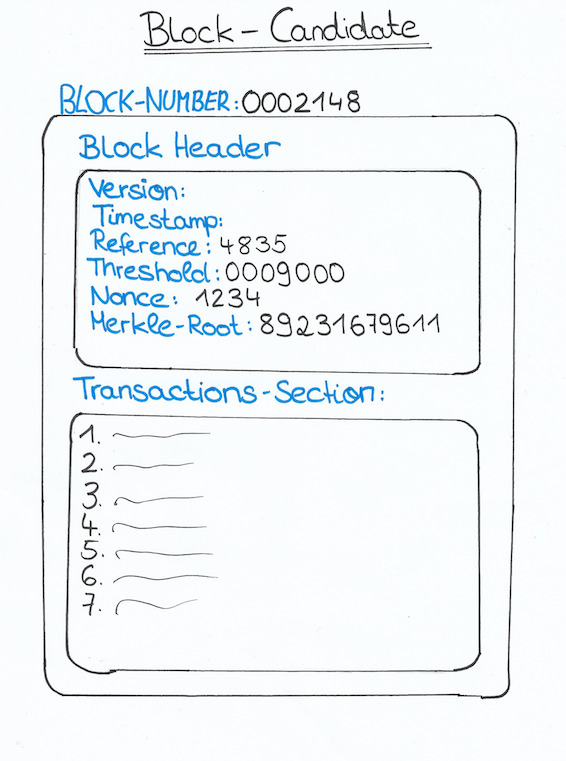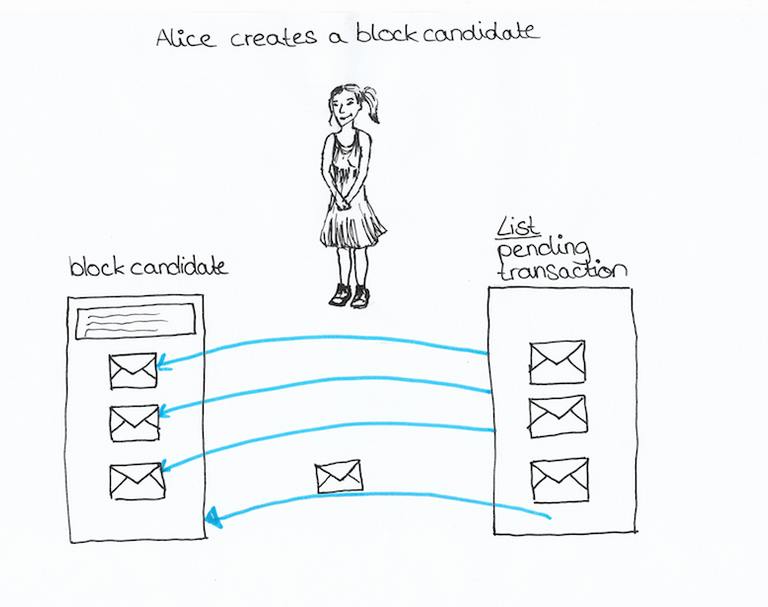
Note
Gain a fundamental understanding of Cryptocurrency in an easy way. Before continue reading the story, I recommend to take a couple of minutes and read through the prior article again in order to refresh your present knowledge. The more often you read through the stories, the more confident you will get with the technology behind cryptocurrencies like Bitcoin. Take your time, to understand cryptocurrencies, as a Steemian it's worth it. The pictures are drawn by @RatzFratz, thanks for that!
If something in the story is not clear to you, don’t hesitate to ask. There are several people who might have the same question. So shoot me a comment, if something is unclear. Me and other readers will appreciate it!
In the last episode we saw that a Bitcoin-Miner is actually a Full-Node + Mining-Function. During the Bitcoin-Mining(= Mathematical Contest) the Bitcoin-Miner creates a block candidate which he wants to attach to the existing blockchain and therefore get a reward in Bitcoin. This block-candidate is filled with pending BTC-Transaction from the miners local “pending-list”.

If a Bitcoin-Miner wins the Mathematical-contest, he is able to attach his created block-candidate to the current blockchain.
So far we described this mathematical-contest as a mathematical-task which the miners have to solve with the help of their computers.

Now I want to talk more about the Mathematical-Contest. Therefore we need to take a closer look at the block-candidate first.
So in the last episode we said that a Bitcoin-Miner is creating a block-candidate before he joins the mathematical contest.

A block is identified by its individual block-number and in general it consists of two parts:
The transactions-section is quite clear. It contains all the pending bitcoin-transactions the miner included from his local pending transactions-list.
The block-header includes general information about the block-candidate itself. Lets take a closer look.
The block-header consists of following components:
This all sounds complicated and you might feel not-familiar with these numbers. For now just try to remember the names of the components in the block-header. In the next episodes you will understand not only how these components work together but also why they make the Bitcoin-System superior.